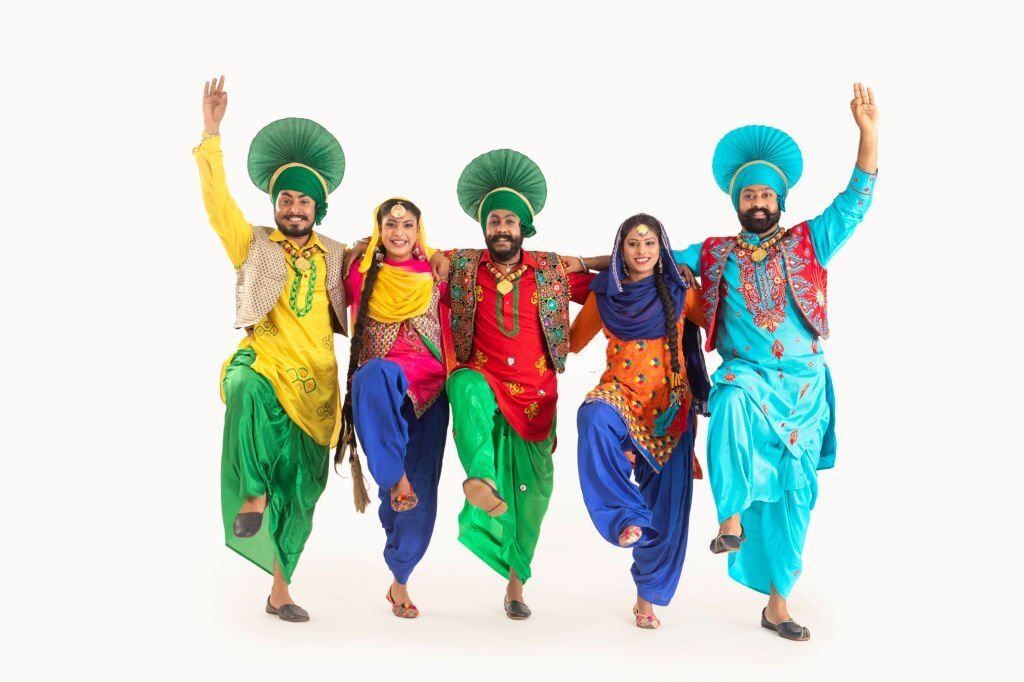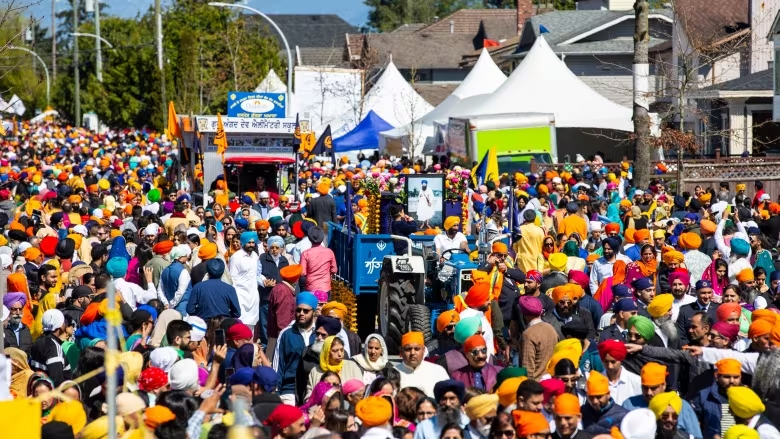Punjab Tradition and Culture
Punjab, a state located in the northwestern region of India, is known for its rich cultural heritage and traditions. Punjabi culture is a blend of ancient customs, religious beliefs, and modern influences, resulting in a unique and vibrant way of life. Here are some of the most prominent Punjabi traditions that have stood the test of time:
Bhangra: Bhangra is a popular Punjabi folk dance that has gained international recognition. This high-energy dance is characterized by fast-paced movements, foot-tapping music, and colorful outfits.
Turban: The turban, also known as dastar, is an important part of Sikh culture and is worn by both men and women. It is a symbol of honor, self-respect, and courage, and is an integral part of Sikh identity.
Punjabi cuisine: Punjabi cuisine is known for its rich flavors, spices, and vegetarian and non-vegetarian dishes. Some of the most popular Punjabi dishes include tandoori chicken, butter chicken, sarson ka saag, and makki di roti.
Punjabi weddings: Punjabi weddings are grand affairs, with multiple ceremonies and rituals spanning several days. The wedding ceremony is conducted in a gurudwara (Sikh temple), and is followed by a lavish reception with music, dance, and food.
Phulkari: Phulkari is a type of embroidery that is native to Punjab. It is characterized by bright colors and intricate floral patterns, and is often used to decorate shawls, dupattas, and other garments.
Punjabi festivals: Punjab celebrates a number of festivals throughout the year, including Lohri, Vaisakhi, and Diwali. These festivals are marked by traditional customs, rituals, and decorations.
Overall, Punjabi tradition is a rich and diverse tapestry that reflects the history and culture of the region. Whether it’s the energetic bhangra dance, the colorful phulkari embroidery, or the sumptuous Punjabi cuisine, Punjabi tradition is sure to captivate and inspire anyone who experiences it.
Best Boutique in Regina
Regina, the capital of Saskatchewan, Canada, is home to a vibrant Punjabi community that has made significant contributions to the city’s cultural landscape. One of the most visible expressions of this culture is the Punjabi boutique scene in Regina, where you can find a variety of traditional Punjabi clothing and accessories.
Punjabi boutiques in Regina offer a wide range of options for women looking to embrace Punjabi fashion. From elegant salwar kameez sets to intricately designed dupattas and Jutti, the boutiques in Regina have it all. These boutiques are known for their unique and beautiful designs, with an emphasis on bright colors, intricate embroidery, and high-quality fabrics.
One of the standout features of Punjabi boutiques in Regina is the personalized service they offer. The knowledgeable staff at these boutiques can help you find the perfect outfit for any occasion, whether it’s a wedding, party, or casual get-together. They can also guide you on selecting the right accessories, including bangles, earrings, and necklaces, that will complement your outfit and enhance your look.
In addition to their exquisite clothing and accessories, Punjabi boutiques in Regina also offer tailoring services, so you can get the perfect fit for your outfit. The boutiques take great care in ensuring that every garment is tailored to perfection, so you can be confident that you’ll look your best.
Overall, Punjabi boutiques in Regina are a must-visit for anyone looking to explore Punjabi fashion and culture. With their unique designs, high-quality fabrics, and personalized service, these boutiques offer a shopping experience unlike any other. So, if you’re in Regina, be sure to check out one of these amazing boutiques and experience the beauty of Punjabi fashion for yourself
Turban history for Sikh
The Sikh turban, also known as a dastaar or pagri, is a symbol of the Sikh identity and holds great significance in Sikh culture. Wearing a turban is a mandatory requirement for Sikh men who have taken Amrit, a sacred initiation ceremony. The turban is not just a piece of cloth wrapped around the head, but it holds a deep spiritual and cultural significance for the Sikh community.
The turban is a visible symbol of the Sikh’s commitment to their faith. It is a declaration of their loyalty to the Sikh principles of equality, justice, and compassion. The turban represents honor, dignity, and self-respect, and it reminds the wearer to always stand up for truth and justice.
The turban also serves as a reminder to the Sikh community to maintain a distinct identity and to be proud of their heritage. It is a way to connect with the Sikh Gurus and the rich history and culture of the Sikh religion. The turban has been worn by Sikh warriors and leaders throughout history, and it symbolizes the strength and resilience of the Sikh community.
In addition to its spiritual and cultural significance, the turban also has practical benefits. It provides protection from the sun, dust, and other elements, and it keeps the hair clean and tidy. Sikh men and women alike can wear turbans, and there are many different styles and colors to choose from.
Unfortunately, the turban has also been the target of discrimination and hate crimes. Sikh men and women have been attacked and harassed because of their turbans, which is a violation of their religious and human rights. The Sikh community continues to advocate for the right to wear turbans without fear of discrimination or violence.
In conclusion, the Sikh turban is a symbol of the Sikh identity, honor, and dignity. It serves as a reminder to always stand up for justice and truth and to maintain a distinct identity and pride in one’s heritage. Despite the challenges faced by the Sikh community, the turban remains a powerful symbol of strength, resilience, and faith.
Now a days Punjabi suits are a popular trend
Punjabi suits are a popular type of traditional clothing worn by women in Punjab, India, and many other parts of the world. They are versatile, comfortable, and come in a variety of colors, fabrics, and designs. One of the most popular types of Punjabi suits is the lady Punjabi suit, which is specifically designed for women.
The lady Punjabi suit consists of a long tunic, known as a kameez, and a pair of loose-fitting pants, known as salwar. The kameez can be sleeveless, short-sleeved, or full-sleeved, and it is often decorated with embroidery, sequins, or other embellishments. The salwar is typically made of a lightweight fabric, such as cotton, and it features a drawstring waistband for a comfortable fit.
One of the great things about lady Punjabi suits is that they are suitable for a variety of occasions. They can be dressed up with jewelry and accessories for formal events, or worn casually for everyday wear. They are also popular choices for weddings, festivals, and other cultural celebrations.
When it comes to choosing a lady Punjabi suit, there are many different styles and designs to choose from. Some popular options include the Patiala suit, which features a loose, pleated salwar, and the Anarkali suit, which is a flowing, full-length kameez with a fitted waist. There are also many modern twists on the traditional Punjabi suit, such as designs with asymmetrical hemlines, cut-out details, and bold prints.
Overall, the lady Punjabi suit is a versatile and stylish choice for women who want to embrace their cultural heritage while still looking fashionable. Whether you are attending a wedding, a festival, or just running errands, a lady Punjabi suit is a great way to feel comfortable, confident, and stylish.
Celebration Vaisakhi in Canada
Vaisakhi is one of the most important festivals in the Sikh religion, and it is celebrated by millions of people worldwide. In Canada, where there is a significant Sikh population, Vaisakhi is a major cultural event that brings people of all backgrounds together.
Vaisakhi is traditionally celebrated on April 13th or 14th every year, and it marks the start of the Sikh New Year. It also commemorates the formation of the Khalsa, the community of initiated Sikhs, in 1699 by Guru Gobind Singh Ji.
In Canada, Vaisakhi celebrations often include parades, cultural performances, and food festivals. The largest Vaisakhi parade in North America takes place in Vancouver, attracting over 100,000 people every year. Other major cities, such as Toronto and Calgary, also hold Vaisakhi parades and events, which are attended by thousands of people.
During Vaisakhi, Sikhs across Canada also visit Gurdwaras, the Sikh place of worship, to offer prayers and take part in religious ceremonies. Langar, a free community meal, is also served at many Gurdwaras, providing an opportunity for people of all backgrounds to come together and share a meal.
Vaisakhi is not only a religious festival but also a celebration of Punjabi culture, with traditional music, dance, and clothing on display. Many Punjabi boutiques offer a range of traditional clothing for men, women, and children, including colorful turbans, bright sarees, and embroidered Punjabi suits.
In conclusion, Vaisakhi is an important festival that celebrates Sikh culture and brings people of all backgrounds together. In Canada, Vaisakhi is a major cultural event that is celebrated with parades, performances, and food festivals, showcasing the rich and vibrant Punjabi culture that has become an integral part of Canadian society.
Punjabi culture in Canada
Punjabi culture has a rich and vibrant history, and it has become an integral part of Canadian society. With a large Punjabi population, Canada has embraced Punjabi culture in various forms, from food and music to traditional clothing and festivals.
One of the most significant aspects of Punjabi culture in Canada is the food. Punjabi cuisine is famous for its bold flavors and spices, and it has become increasingly popular in Canadian cities. Restaurants serving Punjabi food can be found in almost every major city, and dishes such as butter chicken, samosas, and naan have become staples of Canadian cuisine.
Punjabi music has also made a significant impact on Canadian culture. Bhangra, a popular Punjabi dance form, has become a favorite among Canadians, and it is often performed at weddings, festivals, and other cultural events. Punjabi music has also become increasingly mainstream, with artists such as Jazzy B and Babbu Maan gaining popularity among Canadian audiences.
Traditional Punjabi clothing, such as the Punjabi suit and the turban, have also become common sights in Canadian cities. Many Punjabi boutiques offer a range of traditional clothing, including sarees, salwar kameez, and juttis. Turbans, which are an important aspect of Sikh culture, are also worn by many Punjabi men in Canada, and they have become a symbol of cultural pride and identity.
Finally, Punjabi festivals and celebrations, such as Vaisakhi and Diwali, have become major events in Canadian cities, attracting people of all backgrounds. These festivals offer a glimpse into Punjabi culture, with traditional music, dance, and food on display for all to enjoy.
In conclusion, Punjabi culture has become an integral part of Canadian society, enriching the country with its vibrant music, food, and traditions. As the Punjabi community continues to grow and flourish in Canada, its cultural contributions will undoubtedly continue to shape and enrich Canadian society for years to come.







